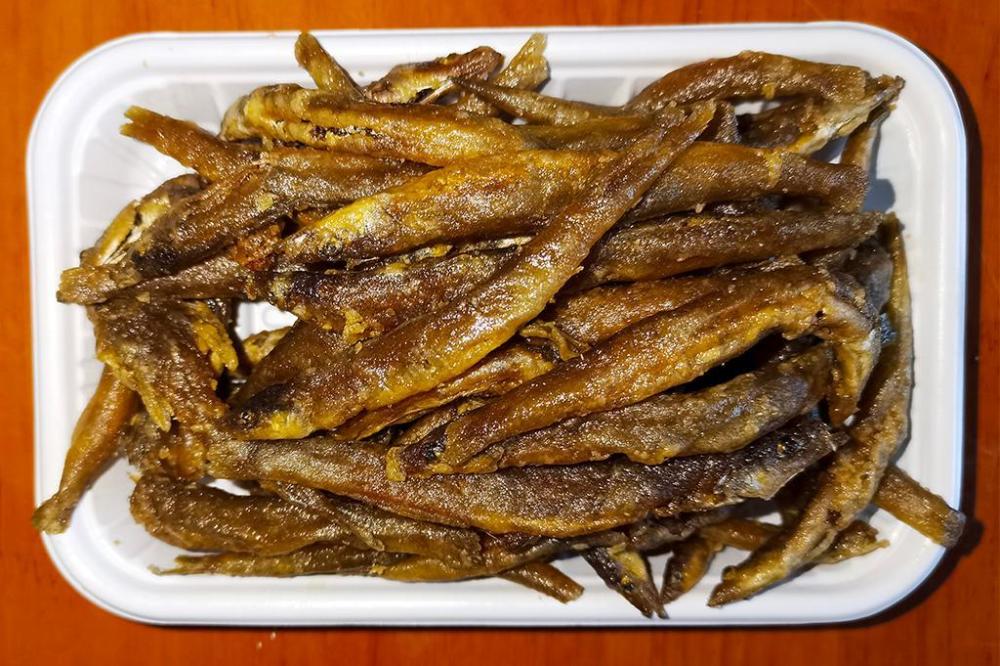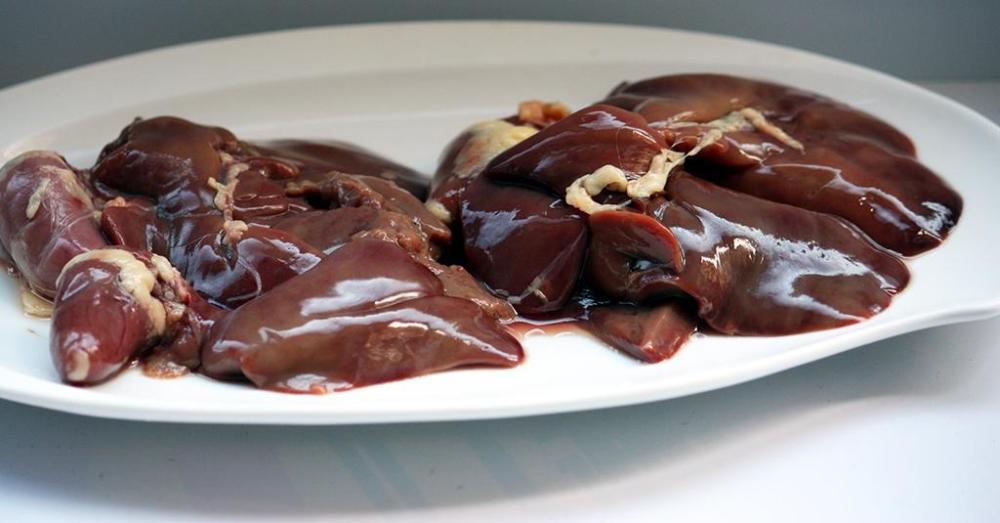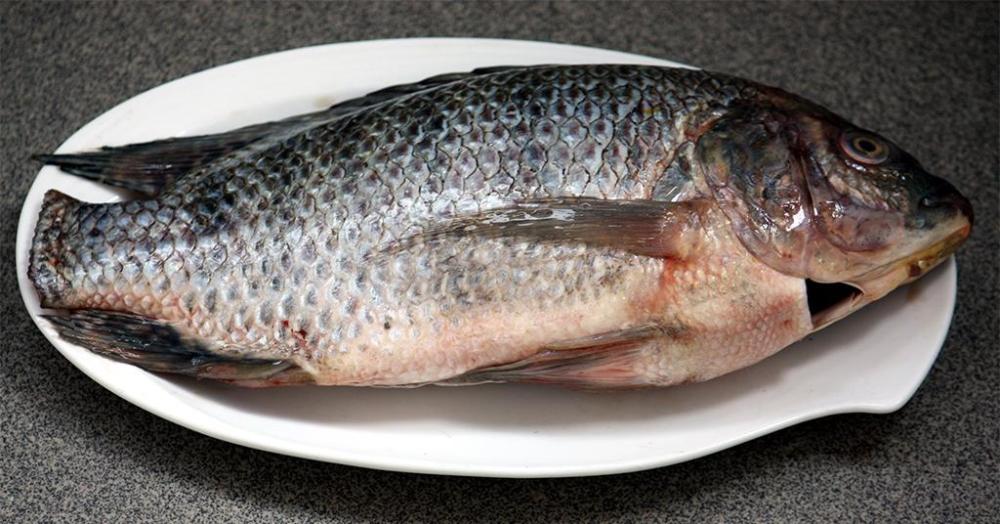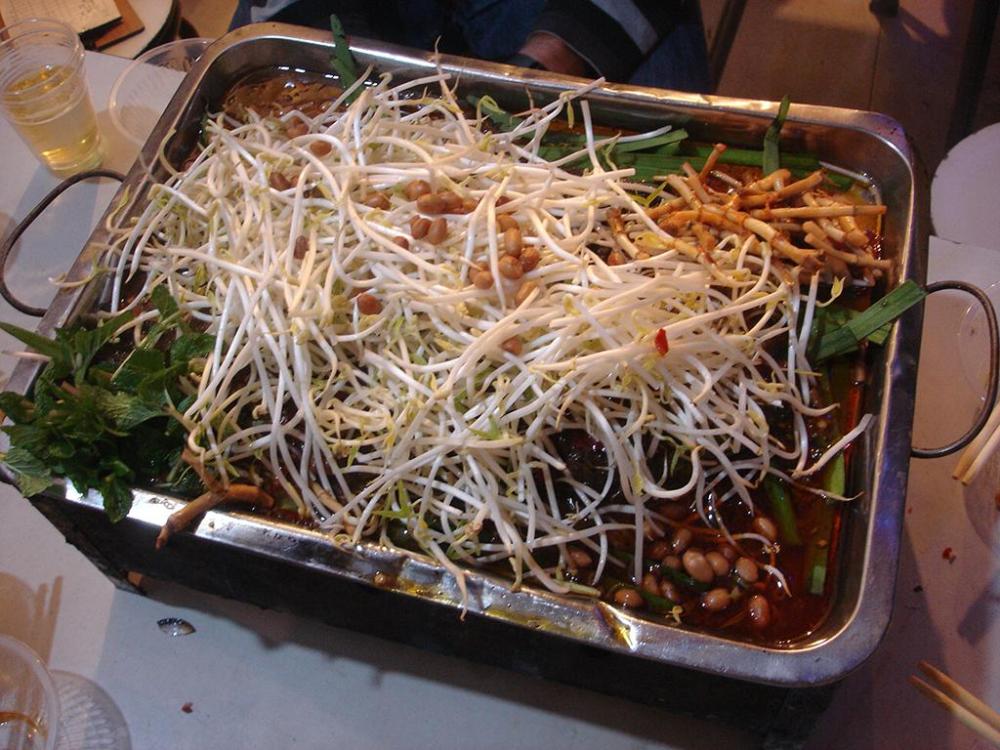-
Posts
16,662 -
Joined
-
Last visited
Content Type
Profiles
Forums
Store
Help Articles
Everything posted by liuzhou
-
Yep.. The full 7 days.
-
As posted in the Dinner 2021 topic - Chicken liver fried rice. Garlic and ginger. Diced celtuce. Chicken livers. Scallions. Rice. Shaoxing wine. That'll do.
-
Chicken liver fried rice. Garlic and ginger. Diced celtuce. Chicken livers. Scallions. Rice. Shaoxing wine. That'll do.
-
Pan fried snubnose pompano with green chilli and scallion. The fish was marinaded in Shaoxing wine and salt before cooking. Served with bread and butter.
-
-
The BBC gives a more detailed account of the invention of the dish which excludes Mr Campeol and gives full credit to his wife and chef.
- 1 reply
-
- 3
-

-
Bad idea? Maybe; maybe not. 500 isn't going to make a difference, though. Just a publicity stunt. Click on the picture.
-
Another common freshwater fish causes mass confusion and is illustrative of the difficulties I have here in identifying fish. This is not atypical. I have spent years tracking down a reliable identification for this ugly species. The most common name I hear, 黄蜂鱼 (huáng fēng yú), Tachysurus fulvidraco translates as 'wasp fish'. There are other alternative names, both in Chinese and English . In English it is sometimes referred to as yellowhead catfish or Korean bullhead. However, no sooner had I found this than I also found two other different but visually identical species. But I’ll deal with this one first. It is a type of bagrid catfish native to East and SE Asia, particularly China, Vietnam, Laos and Korea. Although it can reach 34.5 cm / 13½ inches in length, it is normally around 8 to 10 cm / 2½ to 4 inches. It is prone to parasites so should always be well cooked before consumption. Like the loach above, it can be rather slimy as it it covered in mucus, enabling it to survive long periods out of water. They are also very lively and will attempt to jump away if they see the chance. One friend was preparing some and one escaped and hid under her kitchen cabinets for a week until she could finally recapture it. It was exhausted but still alive when she finally succeeded. The second possibility is 蟾胡鲶 (chán hú nián), Clarias batrachus or the so-called walking catfish. This name does seem to describe the way that fish of my friend’s scuttled away across the floor and they are described as being particularly slimy. My only hesitation in adopting this name is that the species is said to be native to somewhat south of here, where as the first is decidedly local to here, not that things don’t get introduced, as we have seen. Then recently I found contender number three – 胡子鲇 (hú zi nián), Clarias fuscus, literally ‘Beard Catfish’ non-literally ‘Hong Kong Catfish’. However, this is much bigger, so I’m rejecting that. In the end, I suppose they are all similar enough to be one species as far as dinner is concerned if not to picky ichthyologists. Whatever they are, although they are popular here, mainly in stir-fries or soups, I find they lack flavour but aren’t offensive. That’s the closest I can get to a recommendation.
-
Unless you are Italian. Orzo is Italian for "barley". The pasta is so named because of the resemblance.
-
In each example I've given, I've said how the fish in question is prepared.
-
Here is an oddity. Another freshwater fish which is extensively farmed is 大头鱼 (dà tóu yú), Hypophthalmichthys nobilis or Bighead Carp. I say odd because it differs in many ways from other fish in how it is sold, prepared and eaten. And not just because it is bigger. First of all, it is unlike any other member of the carp family in terms of taste. It has none of the favours associated with carp. The flesh is white and firm unlike other carp. The biggest difference though is that, although it is native to China, it has been introduced either accidentally or deliberately to over 70 other countries around the world. In certain US states and in all of Canada, it is illegal to own or sell live fish – the way Chinese and many other Asian customers prefer it. Although whole fish are sold here, usually live, they are also sold freshly killed but in sections more like meat butchery. A whole fish is huge and too much for most families’ needs so, the head and tail are removed and the body cut into fillets to be sold separately. It may or may not surprise you that the tail and especially the head are the most popular parts. It also surprises foreign visitors to the markets when they see the heads displayed on the vendors’ tables still apparently gasping for breath. In fact, they are dead (of course) and what those visitors are observing are post-mortem muscular spasms. The heads are used for the much loved (and delicious) 鱼头豆腐汤 (yú tóu dòu fu tāng) ‘fish head and tofu soup’ served everywhere. The tails are used to make soups and stocks.
-
I do that with all breaded items. I'm convinced it helps achieve a better crust.
-
My simple liver pâté recipe. Butter Olive Oil Shallots Chicken Livers Salt and Pepper er, that 's it. Wash and trim livers and cut into postage stamp sized pices. Melt butter with a little OO and add finely chopped shallots. Fry for a minute then add liver. Fry while stirring and cook until cooked but still pink in the centre. Cut one piece open to check. Try not to overcook. Remove everything to mini food processor, season and blitz to your desired texture. I like mine smooth. Eat. 99% of the time, I do it as above, but on occasion have have added mushrooms, especially shiitake.
-
Why do so many liver pâté recipes include brandy / cognac? I much prefer it without. It's not that I dislike cognac, oh no! I just don't like it with my pâté. Maybe I'm in a minority.
-
As I said, there are over 1,000 species known as loaches. I very much doubt that the ones in your aquarium were the same as the ones we eat here.
-
The final texture is crunchy - like what I think of as whitebait, but that is a very fluid designation - and the mucus somehow disappears. I'd need a scientist to work out why. They didn't teach that in Lingustics 101!
-
Live Loach One fish that you’ll find in a tank in most supermarkets and markets (or sometimes in buckets by the roadside) are 泥鳅 (ní qiu) - Loach. These are not a single species or even one family; there are an astonishing 1,249 known species in nine families. The most commonly consumed here are Misgurnus anguillicaudatus, usually referred to in English as the “pond loach” or “weatherfish”. These are native to East Asia and are extensively farmed commercially, but in the countryside villages are found in the rice paddies. Over the last decade, they have been found in the southern USA. About 4 - 5 inches / 10 - 13 cm long, pond loach are bottom feeding scavengers, mainly eating algae, but also known to eat small worms and aquatic creatures such as snails. They are covered in a mucus which enables them to survive long periods out of water. They are popular in Korea and Japan where they are used in soups. The Korean soup is chueo-tang (추어탕), whereas the Japanese version is dojō nabe (ジョウ鍋). Here in China, though, I’ve only ever had them stir fried (skin and bone on) with the usual garlic, ginger and chilli triad and vegetables, often water spinach aka morning glory. I’ve cooked them this way several times, but also just by dredging them in potato starch (the uncivilised use cørn starch) and deep frying until crisp. Drain sprinkle with salt and chilli powder and Robert is your father’s brother. Great beer food. Please note, they go into the hot oil still alive but die immediately. My Deep Fried Loach If frying them is too much trouble, worry not. The supermarket sells them pre-cooked, too. Supermarket Fried Loach
-
How to Buy a Cow - a hilarious Twitter story.
-
Yup. If they are too dry, wet them.
-
A very similar preparation is used in China. 鸡肝串 (jī gān chuàn) - Chicken livers strung on skewers and grilled over charcoal with cumin and ground chilli in most nightmarkets. My favourite beer food. Usually cooked alongside 羊肉串 (yáng ròu chuàn), the more famous lamb skewers.
-
From this I gather they are not cheap now. How much do you pay? I pay the equivalent of $0.63 USD per ½ lb. Very cheap.
-
I've noticed these little delicious delights being mentioned a lot recently in various discussions, but there doesn't appear to be a central topic to share recipes, stories, recommendations, tips, strategies or suggestions - until now. They are probably the cheapest protein I can buy here and I always have some in the freezer. I do regularly make pâté (perhaps not as you might, though), but also like to serve them with pasta or devilled for breakfast. Then there are the Chinese recipes. What's your favourite way to deal with the offal even offal haters often love?
-
That's what I call a "restaurant critic"!
-
Following the carp family (to which I shall return), the next most farmed freshwater fish in China is 立鱼 (lì yú), 罗飞鱼 (luó fēi yú) or Tilapia. Tilapia is not one species, but any of over 100 different species. Tilapia While no one sane would claim it to be the tastiest fish going, it is prized for its relative cheapness both in the raising and to the customer. This is mainly due to its being vegetarian. It does however, divide opinion. Some complain about a muddy flavour; others that it tastes off. I don’t get it. Properly raised tilapia should not taste off and I feel the ”muddy” label is overstated and applies to all freshwater fish, farmed or wild. The treatment I see most often is found in the many popular 烤鱼 (kǎo yú - roast fish) restaurants, both smart places and ... let’s say “here today; gone tomorrow” roadside pop-ups. It is roasted whole tilapia served under a pile of vegetables and soy beans with a spicy sauce. Some of these places only do that one dish. I often eat and enjoy this. A sharing meal.




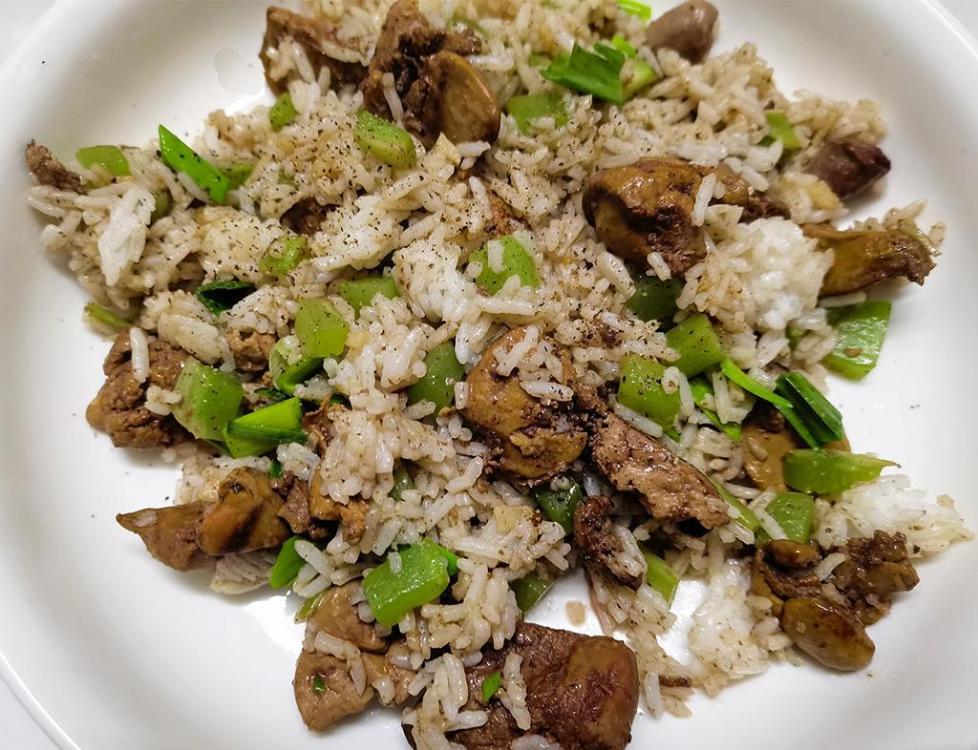
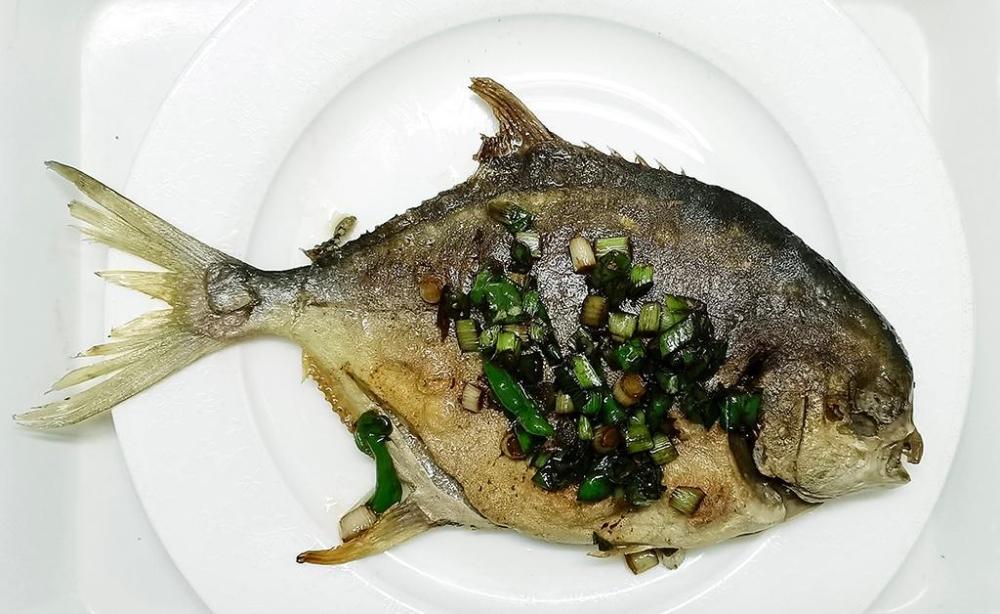

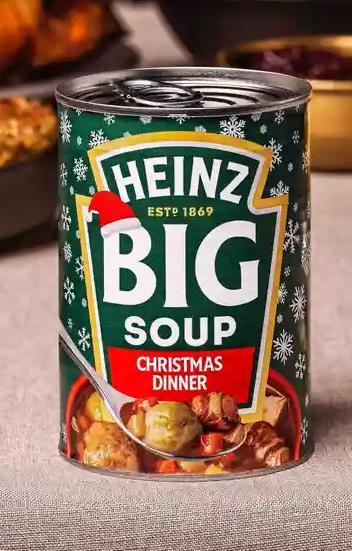


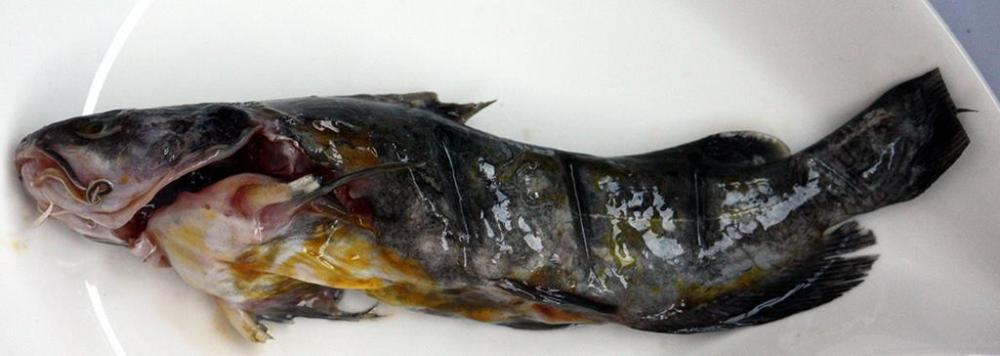

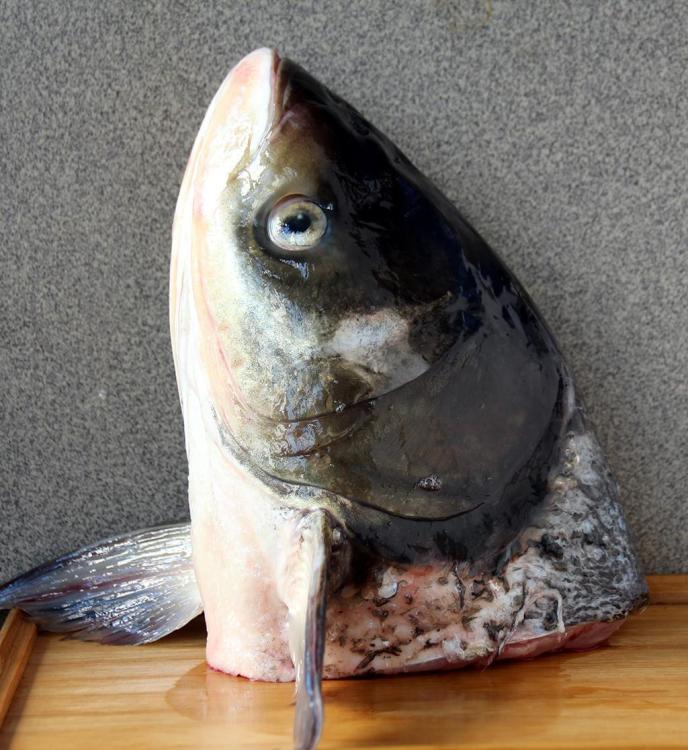
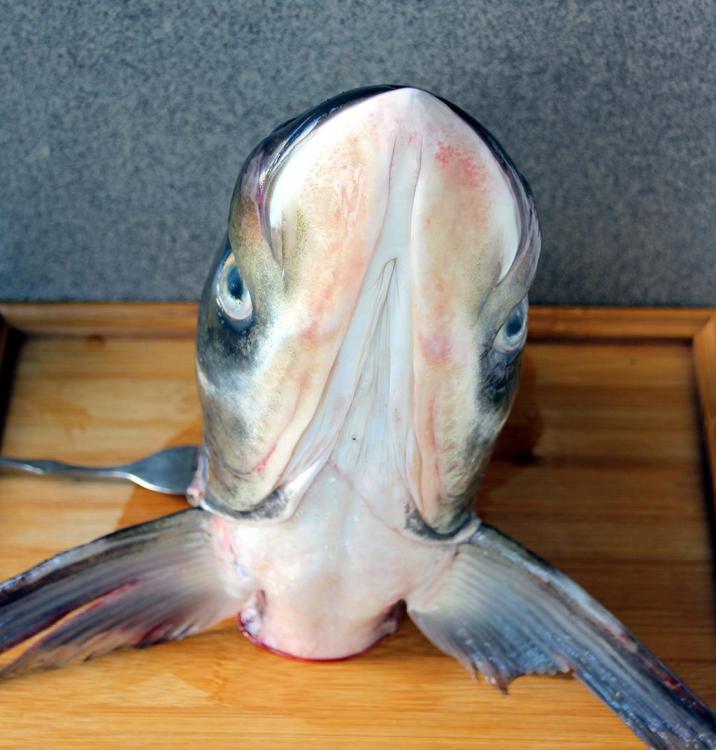
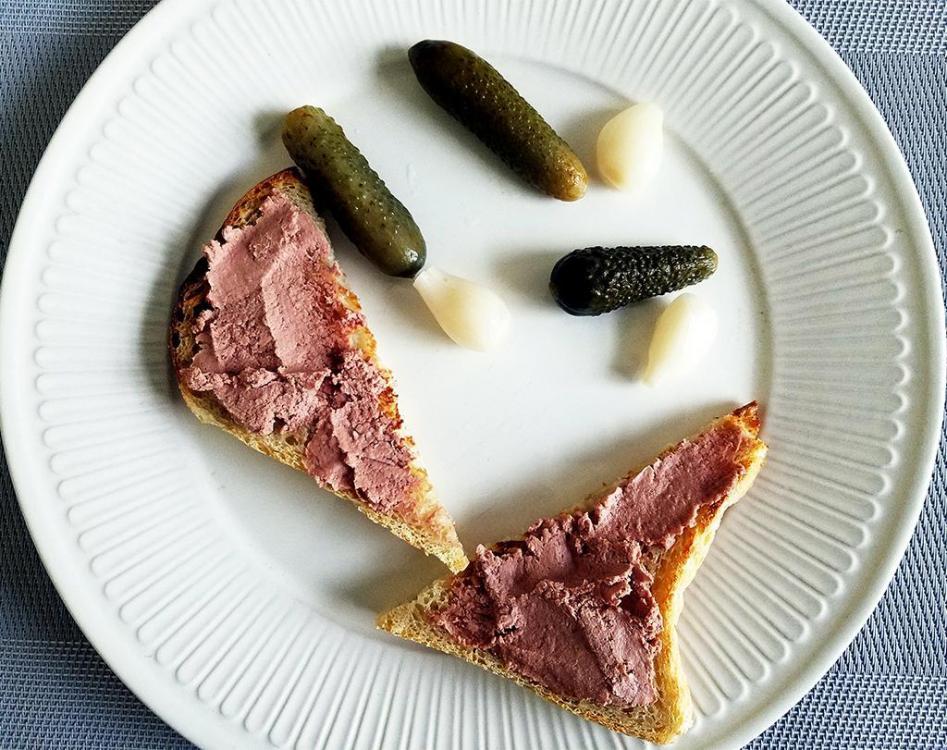
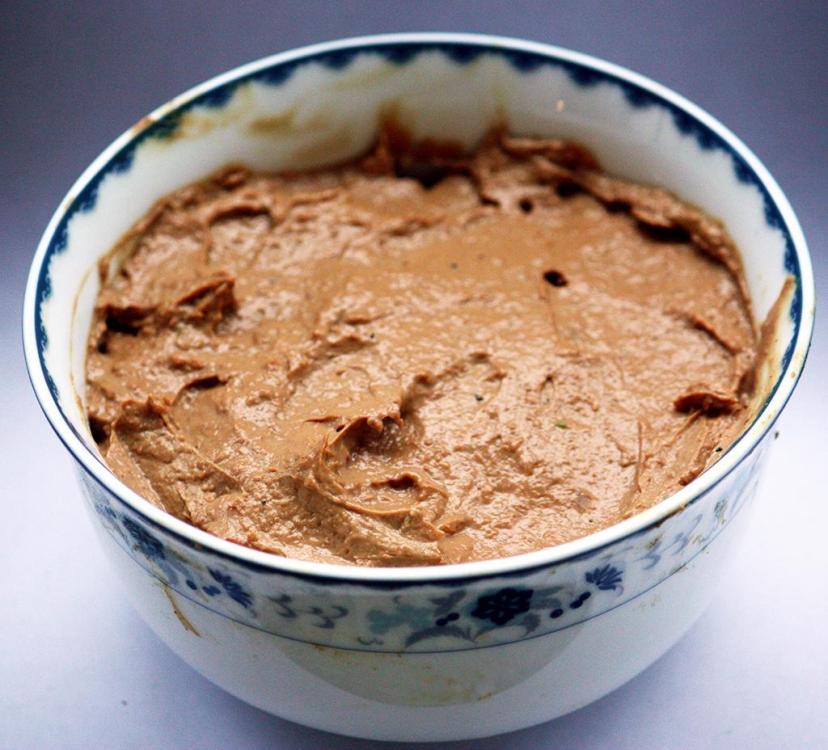
.thumb.jpg.8c4c94cb6262bc46ea2fdbf50c747478.jpg)
.thumb.jpg.f3894ff1db9acbec9e5697c069f9d33d.jpg)
